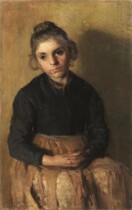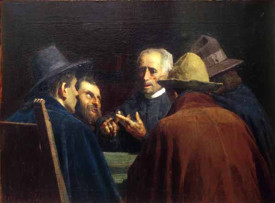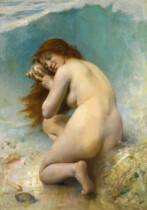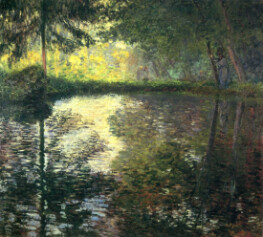The Fourth State
The Fourth Estate and its "construction site" (1891-1901)
A century has passed since 1901, the date that Giuseppe Pellizza placed in Il Quarto Stato to fix the conclusion of the large canvas begun in 1898, but which also marked the end of a decade of passionate studies and continuous reworkings on a theme inspired by problems. of society. The painter's reflections on contemporary history allowed him to move from depicting episodes of struggle for the claim of elementary rights of the people and workers to the affirmation of a slow but inexorable progress of the entire working class, which has risen to be the protagonist of the new century. The painting - as well as those that preceded it, Ambassadors of hunger and Fiumana and The journey of the workers which is the real sketch of the definitive painting - had been conceived and completed by Pellizza a Volpedo, working in the atelier for the execution of the large preparatory cartoons of single figures and groups, for which the fellow villagers posed as models, but then painted it outdoors, bringing the large canvas to Piazzetta Malaspina, where his pointillist painting could be substantiated by the full and warm summer light. Pellizza sent Il Quarto Stato in 1902 to the Quadriennale of Turin, and the capital of his Piedmont seemed to him a harbinger of good wishes. Like any painter, although fond of his work, he did not want to bring it back to his studio and hoped that that large canvas - for which he could not hope for a private buyer - would be taken into consideration for official purchases, of the royal house or of the ministry, in the certainty that, in terms of form and content, it deserved an official and public seat: it would have been a victory for art and for the people. Instead the canvas, whose subject generated a certain embarrassment among right-thinking critics and potential buyers, remained unsold and not awarded and returned to Volpedo's studio, accompanied only by the esteem of some friends, such as Giovanni Cena, who prophesied a long duration for the painting. in time. The strength of the work, however, was consolidated at a popular level and in this context the purchase by the Municipality of Milan also matured in 1920, by public subscription promoted by councilors of the socialist area, with the destination to the Gallery of modern art. of the Sforza Castle. The artistic qualities of the work returned to the fore, also enriching the understanding and interpretation of the subject, starting from 1970 with the Italian Divisionism Exhibition, which marked the beginning of an increasingly prestigious exhibition process both in Italy (from Milan to Alessandria, Turin, Rome) and abroad (from London to Washington, Paris).
[Text taken from "Cent'anni di Quarto Stato", illustrative brochure of the centenary events (Volpedo, 2 - 30 September 2001)">
















